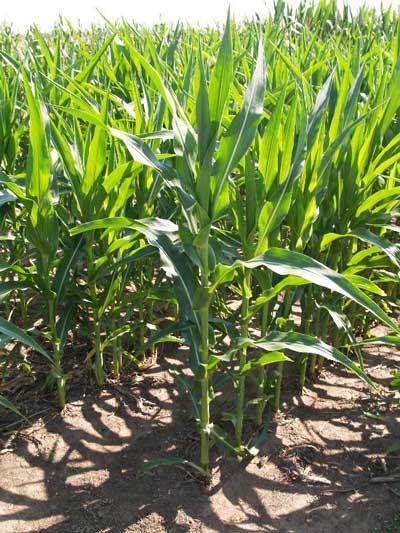
During 2015 we observed several fields of corn following soybean with isolated areas of corn that had root lodged. Upon investigation, rootworm feeding was evident on the roots and there was an abundance of corn rootworm beetles present in those areas. These incidents were not trait failures since the hybrids were simply double stacked glyphosate and corn borer resistant. Could we be witnessing an increase in occurrences of extended diapause with northern corn rootworm? One of the best ways to explore this possibility is through root digs.
Corn rootworm digs are an excellent way to evaluate the effectiveness of your rootworm management strategy. Begin by carefully digging a 10” x 10” x 10” root ball around a corn plant. Cut the stalk about 18” above the soil surface and remove any leaves to make the plant more manageable. Do not shake off or remove any excess soil from the root ball. It may be easiest to immediately transfer the root ball to a five-gallon pail and carry it from the field. Fill the pail to within 5” of the top and allow the root ball to soak for a few minutes to loosen the soil. Gently agitate the stalk and root ball in the water as if you are churning butter. After the majority of the soil has been dislodged from around the roots, you will need to use your hand to break apart the soil clods that are in the bottom of the pail. Remove the stalk and root mass from the pail and let the suspended soil in the water settle while you work with the root mass. Use a pressurized water source to wash the remaining soil away from the roots. Examine the roots, looking for evidence of feeding scars or root pruning. Scars will appear as brown lesions on the roots and pruning will result in the roots being clipped. Quite often the corn root will compensate for root pruning by developing adventitious roots near the point of pruning. These roots often resemble a bottle brush.
Identifying corn rootworm larva in the pail of water is quick and simple once the soil has settled and most of the foam has disappeared. Rootworm larvae will float to the surface and are ½ “- ¾” in length. The larvae resemble a plump grain of cooked rice.
Finally, if you identify root damage and/or the presence of corn rootworm larvae you should step up your scouting efforts and monitor for potential silk clipping by the rootworm beetles.
Originally published in Spokesman. John Grandin serves the FS System as GROWMARK's senior field sales agronomist. He can be reached at [email protected] .